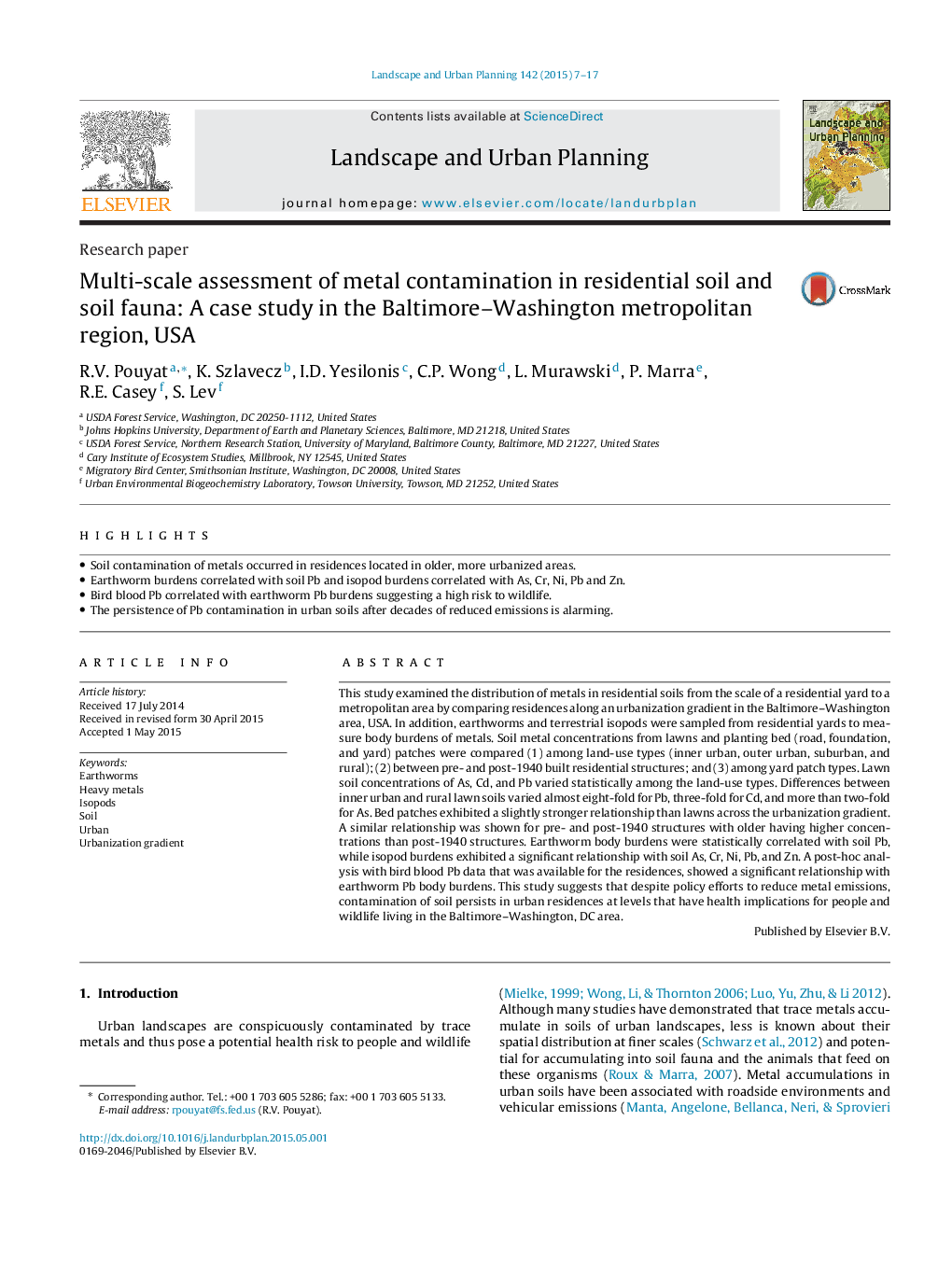| Article ID | Journal | Published Year | Pages | File Type |
|---|---|---|---|---|
| 7460984 | Landscape and Urban Planning | 2015 | 11 Pages |
Abstract
This study examined the distribution of metals in residential soils from the scale of a residential yard to a metropolitan area by comparing residences along an urbanization gradient in the Baltimore-Washington area, USA. In addition, earthworms and terrestrial isopods were sampled from residential yards to measure body burdens of metals. Soil metal concentrations from lawns and planting bed (road, foundation, and yard) patches were compared (1) among land-use types (inner urban, outer urban, suburban, and rural); (2) between pre- and post-1940 built residential structures; and (3) among yard patch types. Lawn soil concentrations of As, Cd, and Pb varied statistically among the land-use types. Differences between inner urban and rural lawn soils varied almost eight-fold for Pb, three-fold for Cd, and more than two-fold for As. Bed patches exhibited a slightly stronger relationship than lawns across the urbanization gradient. A similar relationship was shown for pre- and post-1940 structures with older having higher concentrations than post-1940 structures. Earthworm body burdens were statistically correlated with soil Pb, while isopod burdens exhibited a significant relationship with soil As, Cr, Ni, Pb, and Zn. A post-hoc analysis with bird blood Pb data that was available for the residences, showed a significant relationship with earthworm Pb body burdens. This study suggests that despite policy efforts to reduce metal emissions, contamination of soil persists in urban residences at levels that have health implications for people and wildlife living in the Baltimore-Washington, DC area.
Related Topics
Life Sciences
Agricultural and Biological Sciences
Ecology, Evolution, Behavior and Systematics
Authors
R.V. Pouyat, K. Szlavecz, I.D. Yesilonis, C.P. Wong, L. Murawski, P. Marra, R.E. Casey, S. Lev,
